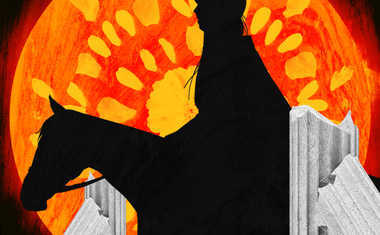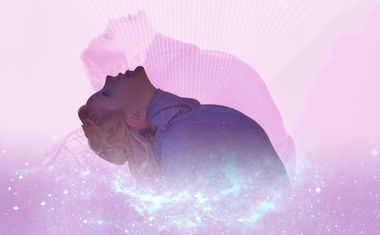
Catharism and the Tarot Conclusions
The final thoughts on the Tarot
Conclusions
This series of studies examined the hypothesis that the Tarot symbols are based on a Gnostic model. The evidence argues against any direct influence from the ancient Gnostics. Their elaborate myths are not evident in the Tarot symbols, their literature was lost, their concepts aren't preserved in the late Medieval literature. The symbols of dualism in the Tarot are more likely derived from proximal sources such as Neoplatonism and the dualism inherent in the Judeo-Christian tradition.
But if the ancient Gnostic systems were lost, perhaps their influence was transmitted through the Cathar heretics. The Cathari had inherited a Christianized version of Gnosticism through the Bogomils. Enclaves of Cathari still existed in Italy in the 15th century when the Tarot first appears. Nevertheless, a careful examination of Cathar doctrine reveals a number of beliefs that are contradicted in the Tarot. The evidence doesn't support a direct contribution from the Cathari.
Violence and persecution destroyed the infrastructure of the Cathari, but not the spirit of rebellion. The resistance to a corrupt church, the drive for individual spirituality, the sense of apocalyptic destiny, the idealism of asceticism and Apostolic poverty remained. The Spiritual Franciscans with their institution of the Tertiaries and their adoption of Joachimism stepped in to fulfill these needs. The common believers, never knowledgeable about or attached to the obscure Gnostic doctrine, were won over and the heresy was transformed. The movement remained rebellious and heretical, but was no longer Gnostic in doctrine.
Beyond this point, the decision on heretical elements in the iconology of the Tarot symbols becomes ambiguous. Heresy continued into the 15th century in Italy where the power of the city-states thwarted direct intervention by the Church. The Spiritual Franciscans certainly stepped over into heresy, but their idealism was greatly admired by the people. Through the confraternities, they provided an orthodox outlet for personal devotion. Elements of the iconology that appear to come from the Apocalyptic tradition or Joachimism might have come from the heretics, but might also have come from sources that shared these concepts and considered them orthodox.
The source of the ambiguity is the liberal attitude toward ideas in Renaissance Italy. When the pope ordered Florence to turn over temporal control to him, they said no. They did not consider themselves heretics because they disobeyed the pope. They considered the pope to be the Joachimist evil pope--he was the heretic. So orthodoxy had no simple definition--it certainly could not be defined as submission to the will of the prophesied harlot of Babylon. An insightful interpretation is provided by Robb (1907): "the more intelligent among the faithful majority who retained their loyalty to the traditional system could not but be affected in some degree by the liberal and independent ideas which were in the air."
So the simplest, perhaps also the most conservative, conclusion is that there is no heretical influence on the Tarot symbols. But while there is no unequivocal evidence to support heretical influence, there is also no unequivocal evidence to disprove it. Critical elements of the iconology were shared by heretical, heterodox, and orthodox ideologies. Any of those ideologies could have produced the symbols.
We must also keep in mind that in 15th century Italy, the distorted zeal and venom of the Inquisition remained. Although their authority was negligible within the powerful city-states, they remained insidious elsewhere. Recall that in 1412, they dug up fifteen dead heretics and burned their bodies (Lambert, 1998)! In such an environment, we should not lightly dismiss the possibility that an heretical enclave used shared orthodox symbols to express themselves. So the door cannot be securely bolted against the possibility of heretical input.
Our explorations also brought to light two new possibilities that are new to the Tarot community. The first is the possibility that some of the Tarot imagery comes from the artistic tradition associated with the book of Revelation, particularly Death, Tower, Judgment, and World. The relevance of this to our current investigation is ambiguous. The imagery is perfectly orthodox, but its familiarity in 15th century Italy was stimulated by the Spiritual Franciscan commentaries on Joachim. The broader relevance of this potential source of symbolism to our understanding of the early Tarot is beyond the scope of the present studies. That subject deserves a study of its own.
The second new idea was the suggestion that the confraternities were a reasonable candidate for the originators of the Tarot. The relevance of this to the present study was that the confraternities were a special project of the Franciscans and were strongly influenced by Spiritualist ideas. Once again, the broader relevance of this suggestion to our understanding of the early Tarot is beyond the scope of the present studies. That subject deserves a study of its own.
References
Ragg, L. 1907. Dante and His Italy. rptd. Haskell House, NY 1973.
Lambert, M. 1998. The Cathars. Blackwell, Oxford.



